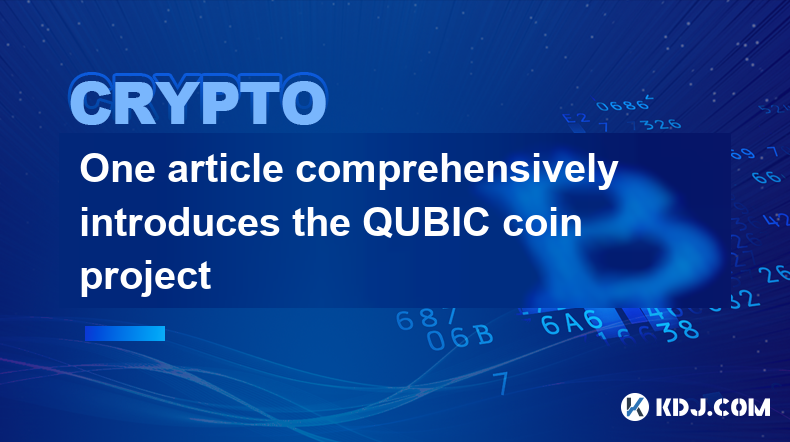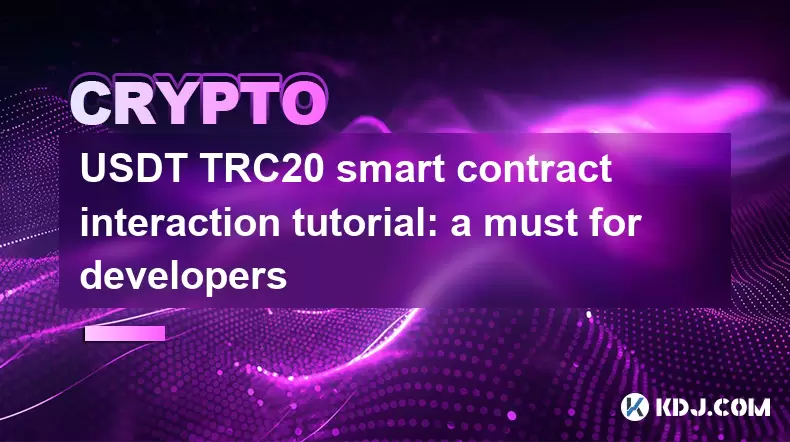-
 Bitcoin
Bitcoin $105,053.8967
0.28% -
 Ethereum
Ethereum $2,536.9103
0.49% -
 Tether USDt
Tether USDt $1.0004
0.01% -
 XRP
XRP $2.1735
1.51% -
 BNB
BNB $650.9659
-0.36% -
 Solana
Solana $146.0013
1.03% -
 USDC
USDC $1.0000
0.01% -
 Dogecoin
Dogecoin $0.1776
1.66% -
 TRON
TRON $0.2700
-1.20% -
 Cardano
Cardano $0.6367
0.08% -
 Hyperliquid
Hyperliquid $41.5154
4.36% -
 Sui
Sui $3.0303
1.00% -
 Bitcoin Cash
Bitcoin Cash $436.0395
5.03% -
 Chainlink
Chainlink $13.1926
-0.32% -
 UNUS SED LEO
UNUS SED LEO $9.0306
-0.41% -
 Stellar
Stellar $0.2595
0.37% -
 Avalanche
Avalanche $19.1528
0.37% -
 Toncoin
Toncoin $3.0008
1.46% -
 Shiba Inu
Shiba Inu $0.0...01218
4.24% -
 Hedera
Hedera $0.1597
4.06% -
 Litecoin
Litecoin $86.1907
2.88% -
 Polkadot
Polkadot $3.8078
-0.27% -
 Ethena USDe
Ethena USDe $1.0005
0.02% -
 Monero
Monero $315.3789
0.26% -
 Dai
Dai $0.9999
0.01% -
 Bitget Token
Bitget Token $4.5446
0.46% -
 Pepe
Pepe $0.0...01114
4.48% -
 Uniswap
Uniswap $7.3261
1.15% -
 Pi
Pi $0.5867
5.21% -
 Aave
Aave $276.8268
-2.40%
One article comprehensively introduces the QUBIC coin project
The QUBIC blockchain's multi-tiered architecture facilitates parallel processing, enabling efficient handling of multiple tasks without compromising performance.
Dec 23, 2024 at 09:28 pm

QUBIC Coin: A Comprehensive Guide
Key Points:
- Qubic is a next-generation blockchain platform that aims to provide secure and scalable solutions for various industries.
- The QUBIC coin is the native cryptocurrency that powers the Qubic blockchain and enables various transactions and services.
- The Qubic ecosystem offers a range of features, including smart contracts, decentralized applications, and a dedicated governance mechanism.
QUBIC: A Comprehensive Introduction
QUBIC is an innovative blockchain platform designed for secure and efficient transactions. It employs a unique Proof-of-Stake (PoS) consensus mechanism called "Proof of Useful Stake" (PoUS), which rewards participants for using their resources to support the network.
The QUBIC blockchain is highly scalable, allowing it to process transactions quickly and handle a large volume of data securely. It features a multi-tiered architecture that facilitates efficient and parallel processing, enabling the platform to handle multiple tasks concurrently without compromising performance.
The Role of QUBIC Coin
The QUBIC coin serves as the backbone of the Qubic ecosystem, facilitating various transactions and services on the platform. It is utilized for:
- Transaction Fees: QUBIC coins are required to pay transaction fees on the Qubic network, ensuring the smooth and efficient operation of the blockchain.
- Staking: Users can stake their QUBIC coins to participate in the PoUS consensus mechanism and earn rewards for supporting the network's security.
- Governance: QUBIC coin holders participate in the platform's governance, voting on proposals that affect the development and direction of the project.
Qubic Ecosystem Features
Smart Contracts: Qubic supports smart contract functionality, enabling developers to create decentralized applications (dApps) that run on the blockchain. These applications can automate tasks, streamline processes, and facilitate transparent and secure interactions.
Decentralized Applications: The Qubic ecosystem provides a platform for building and deploying dApps that leverage the blockchain's decentralized infrastructure. These dApps offer various benefits, including increased security, transparent data management, and autonomous execution.
Governance Mechanism: QUBIC coin holders play a crucial role in the project's governance through a dedicated decentralized autonomous organization (DAO). The DAO facilitates decision-making, community proposals, and voting mechanisms, ensuring that the platform remains responsive to the needs of its users.
FAQs on QUBIC Coin
Q: What are the benefits of holding QUBIC coins?
A: Holding QUBIC coins entitles users to participate in staking for rewards, vote on governance proposals, and pay transaction fees on the Qubic network.
Q: How can I purchase QUBIC coins?
A: QUBIC coins can be purchased on various cryptocurrency exchanges that list the token, including BitMart, KuCoin, and Gate.io.
Q: What is the total supply of QUBIC coins?
A: The maximum supply of QUBIC coins is 100,000,000.
Q: What is the consensus mechanism used by the Qubic blockchain?
A: The Qubic blockchain utilizes a Proof-of-Useful-Stake (PoUS) consensus mechanism, which rewards participants for using their resources to support the network.
Q: What industries can benefit from using the Qubic blockchain?
A: The Qubic blockchain offers potential applications in various industries, including finance, supply chain management, healthcare, and government sectors.
Disclaimer:info@kdj.com
The information provided is not trading advice. kdj.com does not assume any responsibility for any investments made based on the information provided in this article. Cryptocurrencies are highly volatile and it is highly recommended that you invest with caution after thorough research!
If you believe that the content used on this website infringes your copyright, please contact us immediately (info@kdj.com) and we will delete it promptly.
- Despite the news that Binance will delist the token on May 2, Alpaca Finance shocked the cryptocurrency market with a 1,100% price increase in the last week.
- 2025-06-14 20:50:13
- Ripple Reportedly Offered $4–5 Billion to Acquire Circle, the Issuer of USDC
- 2025-06-14 20:50:12
- Bitcoin (BTC) Price Prediction: Targeting $351,046 in 2025
- 2025-06-14 20:45:13
- CIA Eyes Bitcoin as Strategic Tool for Payments and Intelligence
- 2025-06-14 20:45:13
- SBTs (Soulbound Tokens): The Next Phase of Decentralized Identity
- 2025-06-14 20:40:13
- Cathie Wood of Ark Invest Predicts Bitcoin (CRYPTO: BTC) Will Hit a Price of $2.4 Million by the Year 2030
- 2025-06-14 20:40:13
Related knowledge

How to customize USDT TRC20 mining fees? Flexible adjustment tutorial
Jun 13,2025 at 01:42am
Understanding USDT TRC20 Mining FeesMining fees on the TRON (TRC20) network are essential for processing transactions. Unlike Bitcoin or Ethereum, where miners directly validate transactions, TRON uses a delegated proof-of-stake (DPoS) mechanism. However, users still need to pay bandwidth and energy fees, which are collectively referred to as 'mining fe...

How to cancel USDT TRC20 unconfirmed transactions? Operation guide
Jun 13,2025 at 11:01pm
Understanding USDT TRC20 Unconfirmed TransactionsWhen dealing with USDT TRC20 transactions, it’s crucial to understand what an unconfirmed transaction means. An unconfirmed transaction is one that has been broadcasted to the blockchain network but hasn’t yet been included in a block. This typically occurs due to low transaction fees or network congestio...

What to do if USDT TRC20 transfers are congested? Speed up trading skills
Jun 13,2025 at 09:56am
Understanding USDT TRC20 Transfer CongestionWhen transferring USDT TRC20, users may occasionally experience delays or congestion. This typically occurs due to network overload on the TRON blockchain, which hosts the TRC20 version of Tether. Unlike the ERC20 variant (which runs on Ethereum), TRC20 transactions are generally faster and cheaper, but during...

The relationship between USDT TRC20 and TRON chain: technical background analysis
Jun 12,2025 at 01:28pm
What is USDT TRC20?USDT TRC20 refers to the Tether (USDT) token issued on the TRON blockchain using the TRC-20 standard. Unlike the more commonly known ERC-20 version of USDT (which runs on Ethereum), the TRC-20 variant leverages the TRON network's infrastructure for faster and cheaper transactions. The emergence of this version came as part of Tether’s...

How to monitor large USDT TRC20 transfers? Tracking tool recommendation
Jun 12,2025 at 06:49pm
Understanding USDT TRC20 TransfersTether (USDT) is one of the most widely used stablecoins in the cryptocurrency ecosystem. It exists on multiple blockchains, including TRON (TRC20). The TRC20 version of USDT operates on the TRON network and offers faster transaction speeds and lower fees compared to its ERC-20 counterpart on Ethereum. When discussing l...

USDT TRC20 smart contract interaction tutorial: a must for developers
Jun 14,2025 at 08:14am
Understanding USDT TRC20 Smart ContractsUSDT TRC20 is a version of the Tether (USDT) stablecoin that operates on the TRON blockchain under the TRC20 protocol. Unlike its ERC20 counterpart on Ethereum, TRC20 offers faster transaction speeds and significantly lower fees, making it popular among developers and users alike. Interacting with TRC20 smart cont...

How to customize USDT TRC20 mining fees? Flexible adjustment tutorial
Jun 13,2025 at 01:42am
Understanding USDT TRC20 Mining FeesMining fees on the TRON (TRC20) network are essential for processing transactions. Unlike Bitcoin or Ethereum, where miners directly validate transactions, TRON uses a delegated proof-of-stake (DPoS) mechanism. However, users still need to pay bandwidth and energy fees, which are collectively referred to as 'mining fe...

How to cancel USDT TRC20 unconfirmed transactions? Operation guide
Jun 13,2025 at 11:01pm
Understanding USDT TRC20 Unconfirmed TransactionsWhen dealing with USDT TRC20 transactions, it’s crucial to understand what an unconfirmed transaction means. An unconfirmed transaction is one that has been broadcasted to the blockchain network but hasn’t yet been included in a block. This typically occurs due to low transaction fees or network congestio...

What to do if USDT TRC20 transfers are congested? Speed up trading skills
Jun 13,2025 at 09:56am
Understanding USDT TRC20 Transfer CongestionWhen transferring USDT TRC20, users may occasionally experience delays or congestion. This typically occurs due to network overload on the TRON blockchain, which hosts the TRC20 version of Tether. Unlike the ERC20 variant (which runs on Ethereum), TRC20 transactions are generally faster and cheaper, but during...

The relationship between USDT TRC20 and TRON chain: technical background analysis
Jun 12,2025 at 01:28pm
What is USDT TRC20?USDT TRC20 refers to the Tether (USDT) token issued on the TRON blockchain using the TRC-20 standard. Unlike the more commonly known ERC-20 version of USDT (which runs on Ethereum), the TRC-20 variant leverages the TRON network's infrastructure for faster and cheaper transactions. The emergence of this version came as part of Tether’s...

How to monitor large USDT TRC20 transfers? Tracking tool recommendation
Jun 12,2025 at 06:49pm
Understanding USDT TRC20 TransfersTether (USDT) is one of the most widely used stablecoins in the cryptocurrency ecosystem. It exists on multiple blockchains, including TRON (TRC20). The TRC20 version of USDT operates on the TRON network and offers faster transaction speeds and lower fees compared to its ERC-20 counterpart on Ethereum. When discussing l...

USDT TRC20 smart contract interaction tutorial: a must for developers
Jun 14,2025 at 08:14am
Understanding USDT TRC20 Smart ContractsUSDT TRC20 is a version of the Tether (USDT) stablecoin that operates on the TRON blockchain under the TRC20 protocol. Unlike its ERC20 counterpart on Ethereum, TRC20 offers faster transaction speeds and significantly lower fees, making it popular among developers and users alike. Interacting with TRC20 smart cont...
See all articles

























































































